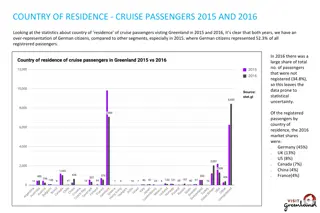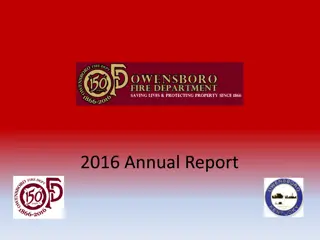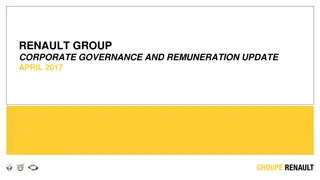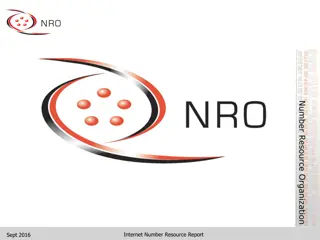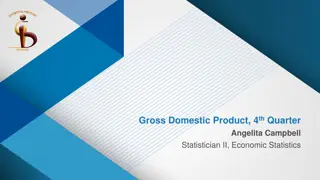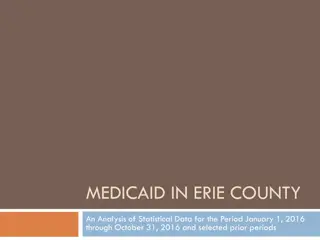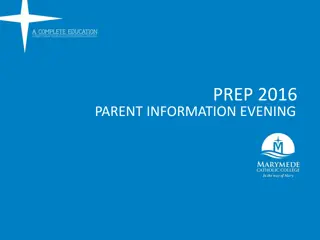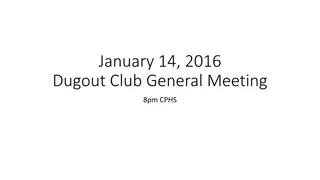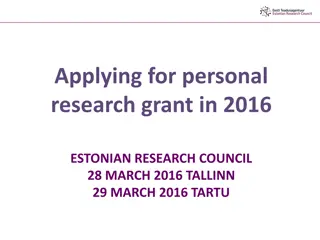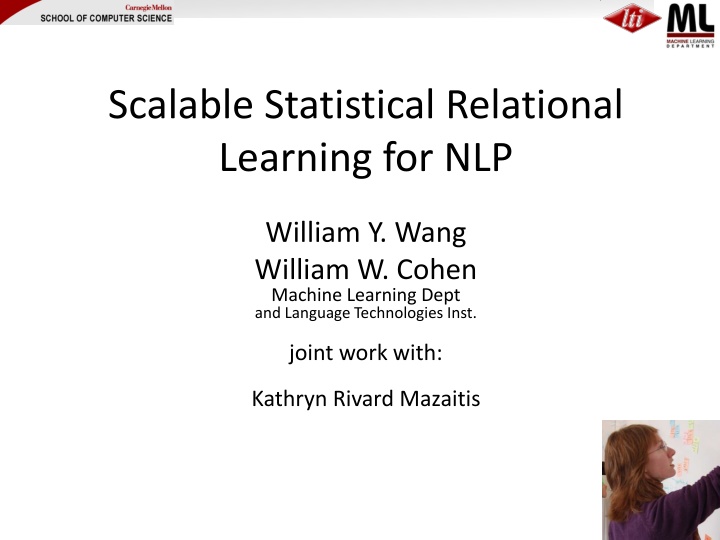
Scalable Statistical Relational Learning for NLP and KR Reasoning
Explore the principles and applications of scalable statistical relational learning for natural language processing (NLP) and knowledge reasoning (KR). Delve into machine learning methods, probabilistic logic programming, and the integration of logic and probabilities in complex tasks.
Download Presentation

Please find below an Image/Link to download the presentation.
The content on the website is provided AS IS for your information and personal use only. It may not be sold, licensed, or shared on other websites without obtaining consent from the author. If you encounter any issues during the download, it is possible that the publisher has removed the file from their server.
You are allowed to download the files provided on this website for personal or commercial use, subject to the condition that they are used lawfully. All files are the property of their respective owners.
The content on the website is provided AS IS for your information and personal use only. It may not be sold, licensed, or shared on other websites without obtaining consent from the author.
E N D
Presentation Transcript
Scalable Statistical Relational Learning for NLP William Y. Wang William W. Cohen Machine Learning Dept and Language Technologies Inst. joint work with: Kathryn Rivard Mazaitis
Outline Motivation Background Logic Probability Combining logic and probabilities: MLNs ProPPR Key ideas Learning method Results for parameter learning Structure learning for ProPPR for KB completion Joint IE and KB completion Comparison to neural KBC models Beyond ProPPR .
KR & Reasoning What if the DB/KB or inference rules are imperfect? Queries Inference Methods, Inference Rules Answers Challenges for KR: Robustness: noise, incompleteness, ambiguity ( Sunnybrook ), statistical information ( foundInRoom(bathtub, bathroom) ), Complex queries: which Canadian hockey teams have won the Stanley Cup? Learning: how to acquire and maintain knowledge and inference rules as well as how to use it Current state of the art Expressive, probabilistic, efficient: pick any two
Machine Learning (for complex tasks) Relational, joint learning and inference Large ML-based software system
Background H/T: Probabilistic Logic Programming, De Raedt and Kersting
Background: Logic Programs A program with one definite clause (Horn clauses): grandparent(X,Y) :- parent(X,Z),parent(Z,Y) head neck body Logical variables: X,Y,Z Constant symbols: bob, alice, We ll consider two types of clauses: Horn clauses A:-B1, ,Bk with no constants Intensional definition, rules Extensional definition, database Unit clauses A:- with no variables (facts): parent(alice,bob):- or parent(alice,bob) H/T: Probabilistic Logic Programming, De Raedt and Kersting
Background: Logic Programs A program with one definite clause: grandparent(X,Y) :- parent(X,Z),parent(Z,Y) Logical variables: X,Y,Z Constant symbols: bob, alice, Predicates: grandparent/2, parent/2 Alphabet: set of possible predicates and constants Atomic formulae: parent(X,Y), parent(alice,bob) Ground atomic formulae: parent(alice,bob), H/T: Probabilistic Logic Programming, De Raedt and Kersting
Background: Logic Programs The set of all ground atomic formulae (consistent with a fixed alphabet) is the Herbrand base of a program: {parent(alice,alice),parent(alice,bob), ,parent(zeke,zeke),gra ndparent(alice,alice), } The interpretation of a program is a subset of the Herbrand base. An interpretation M is a model of a program if For any A:-B1, ,Bk in the program and any mapping Theta from the variables in A,B1,..,Bk to constants: If Theta(B1) in M and and Theta(Bk) in M then Theta(A) in M A program defines a unique least Herbrand model H/T: Probabilistic Logic Programming, De Raedt and Kersting
Background: Logic Programs A program defines a unique least Herbrand model Example program: grandparent(X,Y):-parent(X,Z),parent(Z,Y). parent(alice,bob). parent(bob,chip). parent(bob,dana). The least Herbrand model also includes grandparent(alice,dana) and grandparent(alice,chip). Finding the least Herbrand model: theorem proving Usually we case about answering queries: What are values of W: grandparent(alice,W) ? H/T: Probabilistic Logic Programming, De Raedt and Kersting
Motivation {T : query(T) } ? Queries Inference Methods, Inference Rules Answers Challenges for KR: Robustness: noise, incompleteness, ambiguity ( Sunnybrook ), statistical information ( foundInRoom(bathtub, bathroom) ), Complex queries: which Canadian hockey teams have won the Stanley Cup? Learning: how to acquire and maintain knowledge and inference rules as well as how to use it query(T):- play(T,hockey), hometown(T,C), country(C,canada)
Background Random variable: burglary, earthquake, Usually denote with upper-case letters: B,E,A,J,M Joint distribution: Pr(B,E,A,J,M) B E A J M prob T T T T T 0.00001 F T T T T 0.03723 H/T: Probabilistic Logic Programming, De Raedt and Kersting
Background: Bayes networks Random variable: B,E,A,J,M Joint distribution: Pr(B,E,A,J,M) A J Prob(J|A) Directed graphical models give one way of defining a compact model of the joint distribution: F F 0.95 F T 0.05 T F 0.25 T T 0.75 Pr(B,E,A,J,M)=P(J |A)P(M |A)P(A|B,E)P(B)P(E) A M Prob(J|A) Queries: Pr(A=t|J=t,M=f) ? F F 0.80 H/T: Probabilistic Logic Programming, De Raedt and Kersting
Background A J Prob(J|A) Random variable: B,E,A,J,M Joint distribution: Pr(B,E,A,J,M) F F 0.95 F T 0.05 T F 0.25 T T 0.75 Directed graphical models give one way of defining a compact model of the joint distribution: Pr(B=b,E =e,A=a, j,m)=P(J = j|A=a)...P(E =e) Queries: Pr(A=t|J=t,M=f) ? H/T: Probabilistic Logic Programming, De Raedt and Kersting
Background: Markov networks Random variable: B,E,A,J,M Joint distribution: Pr(B,E,A,J,M) x x x x Undirected graphical models give another way of defining a compact model of the joint distribution via potential functions. (A=a,J=j) is a scalar measuring the compatibility of A=a J=j A J (a,j) F F 20 F T 1 T F 0.1 T T 0.4
Background Pr(B=b,E =e,A= a, j,m) =1 ZfJA(a, j)fMA(a,m)fAB(a,b)fAE(a,e)fE(e)fB(b) x x x x clique potential A J (a,j) F F 20 F T 1 (A=a,J=j) is a scalar measuring the compatibility of A=a J=j T F 0.1 T T 0.4
Motivation In space of flat propositions corresponding to single random variables Queries Inference Methods, Inference Rules Answers Challenges for KR: Robustness: noise, incompleteness, ambiguity ( Sunnybrook ), statistical information ( foundInRoom(bathtub, bathroom) ), Complex queries: which Canadian hockey teams have won the Stanley Cup? Learning: how to acquire and maintain knowledge and inference rules as well as how to use it
Background ??? H/T: Probabilistic Logic Programming, De Raedt and Kersting
Outline Motivation Background Logic Probability Combining logic and probabilities: MLNs ProPPR Key ideas Learning method Results for parameter learning Structure learning for ProPPR for KB completion Joint IE and KB completion Comparison to neural KBC models Beyond ProPPR .
Markov Networks: [Review] Undirected graphical models Smoking Cancer Asthma Cough x = vector Smoking Cancer (S,C) 1 c = ( ) cx ( ) P x c False False 4.5 Z False True 4.5 x c = cx ( ) Z True False 2.7 c True True 4.5 xc = short vector H/T: Pedro Domingos
Markov Logic: Intuition A logical KB is a set of hard constraints on the set of possible worlds Let s make them soft constraints: When a world violates a formula, It becomes less probable, not impossible Give each formula a weight (Higher weight Stronger constraint) ( weights exp P(world) ) of formulas it satisfies H/T: Pedro Domingos
Markov Logic: Definition A Markov Logic Network (MLN) is a set of pairs (F, w) where F is a formula in first-order logic w is a real number Together with a set of constants, it defines a Markov network with One node for each grounding of each predicate in the MLN One feature for each grounding of each formula F in the MLN, with the corresponding weight w H/T: Pedro Domingos
Example: Friends & Smokers Smoking causes cancer. Friends have similar smoking habits. H/T: Pedro Domingos
Example: Friends & Smokers ( ) ( ) x Smokes x Cancer x ( ) ) y , ( , ) ( ) ( x y Friends x y Smokes x Smokes H/T: Pedro Domingos
Example: Friends & Smokers 5 . 1 ( ) ( ) x Smokes x Cancer x ( ) ) y 1 . 1 , ( , ) ( ) ( x y Friends x y Smokes x Smokes H/T: Pedro Domingos
Example: Friends & Smokers 5 . 1 ( ) ( ) x Smokes x Cancer x ( ) ) y 1 . 1 , ( , ) ( ) ( x y Friends x y Smokes x Smokes Two constants: Anna (A) and Bob (B) H/T: Pedro Domingos
Example: Friends & Smokers 5 . 1 ( ) ( ) x Smokes x Cancer x ( ) ) y 1 . 1 , ( , ) ( ) ( x y Friends x y Smokes x Smokes Two constants: Anna (A) and Bob (B) Smokes(A) Smokes(B) Cancer(A) Cancer(B) H/T: Pedro Domingos
Example: Friends & Smokers 5 . 1 ( ) ( ) x Smokes x Cancer x ( ) ) y 1 . 1 , ( , ) ( ) ( x y Friends x y Smokes x Smokes Two constants: Anna (A) and Bob (B) Friends(A,B) Friends(A,A) Smokes(A) Smokes(B) Friends(B,B) Cancer(A) Cancer(B) Friends(B,A) H/T: Pedro Domingos
Example: Friends & Smokers 5 . 1 ( ) ( ) x Smokes x Cancer x ( ) ) y 1 . 1 , ( , ) ( ) ( x y Friends x y Smokes x Smokes Two constants: Anna (A) and Bob (B) Friends(A,B) Friends(A,A) Smokes(A) Smokes(B) Friends(B,B) Cancer(A) Cancer(B) Friends(B,A) H/T: Pedro Domingos
Example: Friends & Smokers 5 . 1 ( ) ( ) x Smokes x Cancer x ( ) ) y 1 . 1 , ( , ) ( ) ( x y Friends x y Smokes x Smokes Two constants: Anna (A) and Bob (B) Friends(A,B) Friends(A,A) Smokes(A) Smokes(B) Friends(B,B) Cancer(A) Cancer(B) Friends(B,A) H/T: Pedro Domingos
Markov Logic Networks MLN is template for ground Markov nets Probability of a world x: = Z 1 ( ) exp ( ) P x w n x i i i Weight of formula i No. of true groundings of formula i in x H/T: Pedro Domingos
MLNs generalize many statistical models Obtained by making all predicates zero-arity Special cases: Markov networks Markov random fields Bayesian networks Log-linear models Exponential models Max. entropy models Gibbs distributions Boltzmann machines Logistic regression Hidden Markov models Conditional random fields Markov logic allows objects to be interdependent (non-i.i.d.)
MLNs generalize logic programs Subsets of Herbrand base domain of joint distribution Interpretation element of the joint Consistency with all clauses A:-B1, ,Bk == model of program compatibility with program as determined by clique potentials Reaches logic in the limit when potentials are infinite.
MLNs are expensive Inference done by explicitly building a ground MLN Herbrand base is huge for reasonable programs: It grows faster than the size of the DB of facts You d like to able to use a huge DB NELL is O(10M) Inference on an arbitrary MLN is expensive: #P-complete It s not obvious how to restrict the template so the MLNs will be tractable
Whats the alternative? There are many probabilistic LPs: Compile to other 0th-order formats: (Bayesian LPs, ProbLog, .), Impose a distribution over proofs, not interpretations (Probabilistic Constraint LPs, Stochastic LPs, ): requires generating all proofs to answer queries, also a large space Sample from the space of proofs (PRISM, Blog) Limited relational extensions to 0th-order models (PRMs, RDTs, MEBNs, ) Probabilistic programming languages (Church, ) Imperative languages for defining complex probabilistic models (Related LP work: PRISM)
Outline Motivation Background Logic Probability Combining logic and probabilities: MLNs ProPPR Key ideas Learning method Results for parameter learning Structure learning for ProPPR for KB completion Joint IE and KB completion Comparison to neural KBC models Beyond ProPPR .

